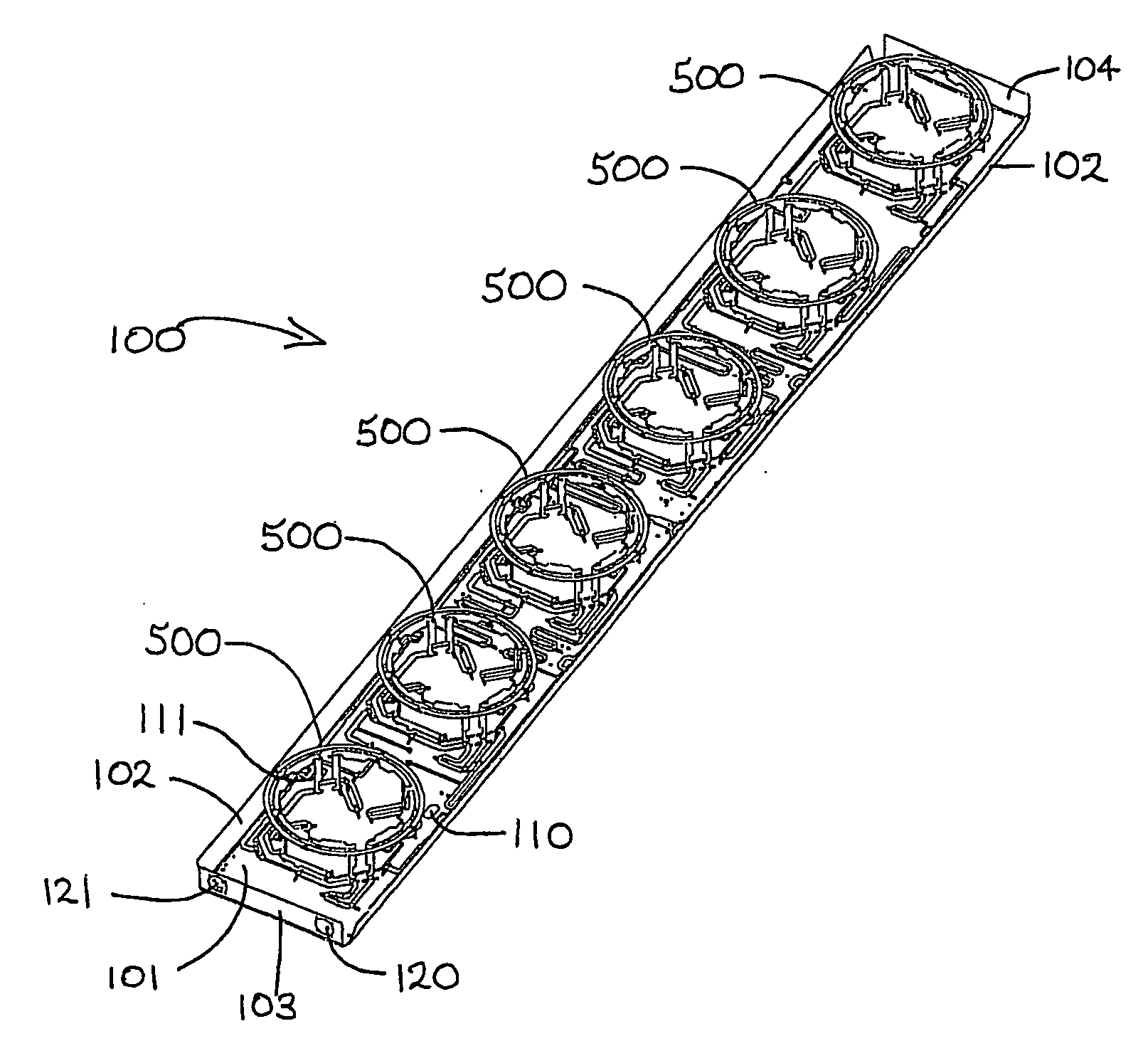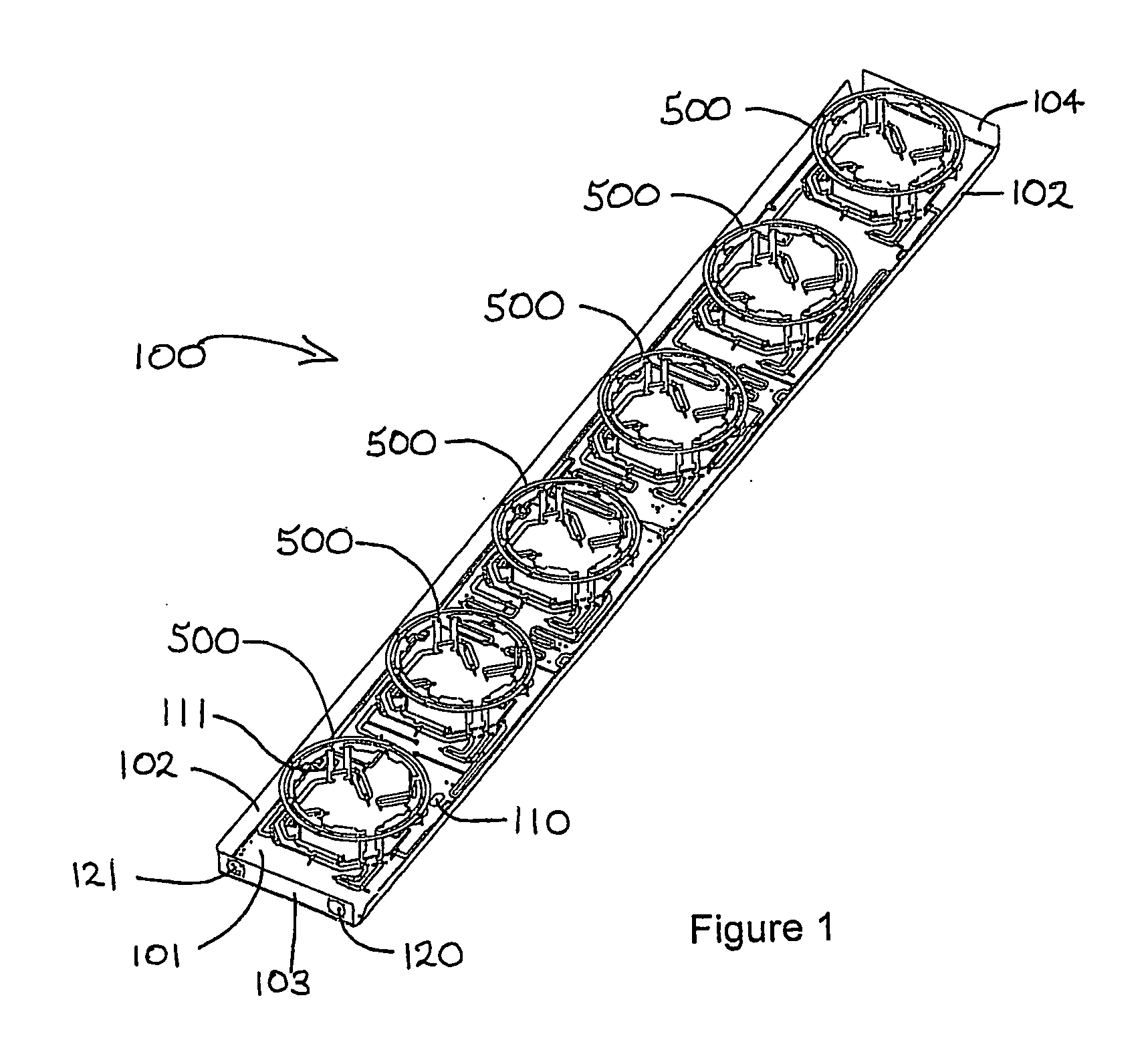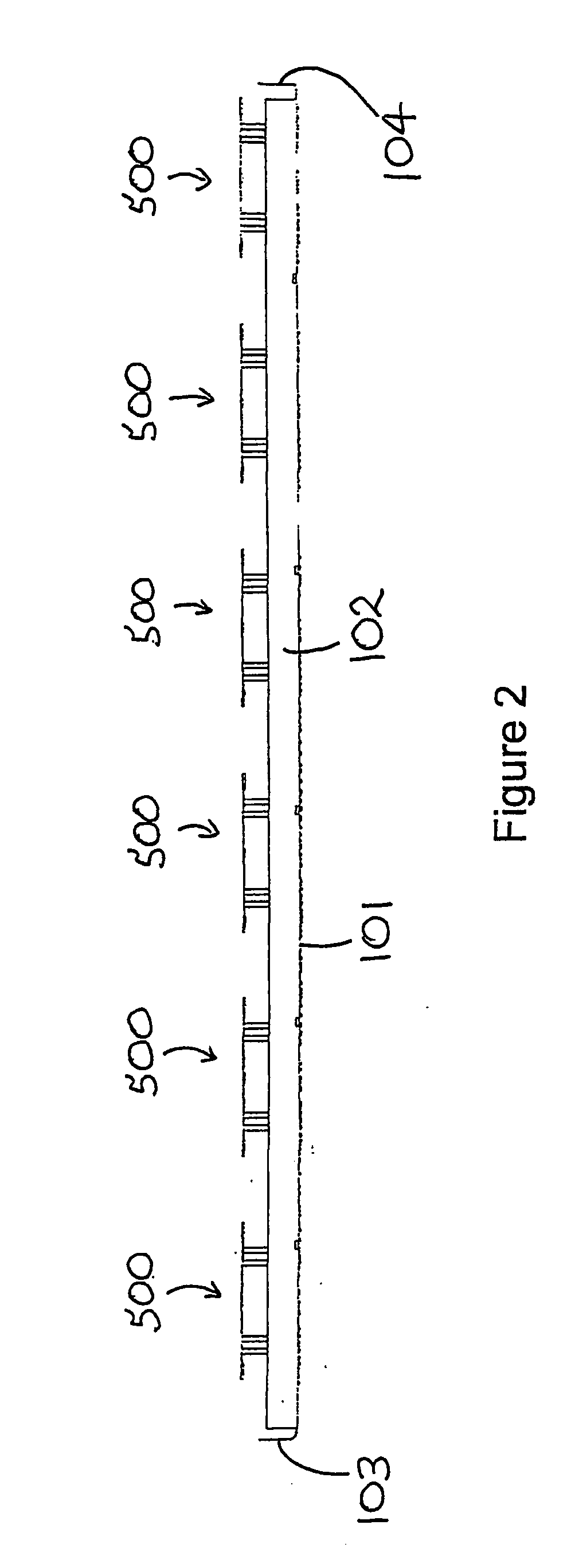Dipole Antennas and Coaxial to Microstrip Transitions
a transition and dipole antenna technology, applied in the field offolded dipoles, can solve the problems of increased coupling, unacceptably large number of antennas at each site, increased cost and bulk, etc., and achieve the effect of increasing the rigidity of the dipole box and allowing the spacing between adjacent dipoles to be controlled accurately
- Summary
- Abstract
- Description
- Claims
- Application Information
AI Technical Summary
Benefits of technology
Problems solved by technology
Method used
Image
Examples
second embodiment
[0131]FIG. 8 shows a single dual polarization folded dipole antenna module 800 according to the present invention. The ground plane and dielectric spacers are not shown. The antenna module 800 is identical to the module 500 shown in FIG. 5, except it is provided as a single self-contained module with inputs 840 and 841.
[0132]In a variable downtilt antenna (not shown), a number of single modules 800 can be arranged in a line and ganged together with cables, circuit-board splitters, and variable differential phase shifters for adjusting the phase between the modules. For instance, the differential phase shifters described in US2002 / 0126059A1 and US2002 / 0135524A1 may be used.
[0133]The transition coupling the coaxial transmission line 360 with the RF input section 340 is shown in FIGS. 9-13. The coaxial transmission line 360 has a central conductor 361 and a cylindrical coaxial conductive sheath 362 separated from the central conductor by a dielectric 363. An insulating jacket 364 enclo...
third embodiment
[0148]Referring now to FIG. 17 a third embodiment is shown which is a modification of the embodiment shown in FIG. 15. Like integers have been given like numbers. In this embodiment two additional arrays of cross dipoles have been added to the embodiment shown in FIG. 17. A first array of cross dipoles 1040, 1041 and 1042 is provided to the left and a second array of cross dipoles 1043, 1044 and 1045 is provided to the right. By adjusting power division or phase shift between first array 1040, 1041 and 1042, second array 1023-1028 and third array 1043-1045, beam width may be adjusted or azimuth steering may be provided. Various feed arrangements for adjusting beam width or effecting azimuth and / or downtilt steering are disclosed in the Applicant's PCT application no. PCT / NZ01 / 00137, the disclosure of which is hereby incorporated by way of reference. Such techniques may also be utilised with the multi array embodiments described hereafter. Beam width / angle control may be effected usi...
sixth embodiment
[0152]FIG. 20 shows a sixth embodiment comprising a first array of dipole rings for operation over a first frequency band and a second array of dipole rings 1066, 1067 and 1068 operable over a second frequency band having a mid-frequency higher than the mid-frequency of the first frequency band. All dipole rings employ curvilinear folded dipoles of substantially quarter circle segments. The arrangement has good symmetry and thus good isolation characteristics.
[0153]The further embodiment shown in FIG. 21 is similar to the embodiment shown in FIG. 20 except that additional high band dipole rings 1069 and 1070 are provided in the gaps between low frequency dipole rings 1071-1073. The array of high frequency dipole rings 1074, 1069, 1075, 1070 and 1076 may be spaced so as to avoid grating lobes. It will be appreciated that additional high frequency band dipole rings may be placed between low frequency band dipole rings in other embodiments herein described also.
[0154]Referring now to F...
PUM
 Login to View More
Login to View More Abstract
Description
Claims
Application Information
 Login to View More
Login to View More - R&D
- Intellectual Property
- Life Sciences
- Materials
- Tech Scout
- Unparalleled Data Quality
- Higher Quality Content
- 60% Fewer Hallucinations
Browse by: Latest US Patents, China's latest patents, Technical Efficacy Thesaurus, Application Domain, Technology Topic, Popular Technical Reports.
© 2025 PatSnap. All rights reserved.Legal|Privacy policy|Modern Slavery Act Transparency Statement|Sitemap|About US| Contact US: help@patsnap.com



